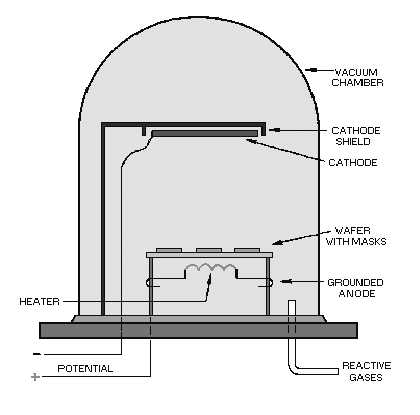1-16
The vacuum evaporation technique is most suitable for deposition of highly reactive materials, such
as aluminum, that are difficult to work with in air. The method is clean and allows a better contact
between the layer of deposited material and the surface upon which it has been deposited. In addition,
because evaporation beams travel in straight lines, very precise patterns may be produced.
CATHODE-SPUTTERING.—A typical cathode-sputtering system is illustrated in figure 1-16.
This process is also performed in a vacuum. A potential of 2 to 5 kilovolts is applied between the anode
and cathode (source material). This produces a GLOW DISCHARGE in the space between the electrodes.
The rate at which atoms are SPUTTERED off the source material depends on the number of ions that
strike it and the number of atoms ejected for each ion bombardment. The ejected atoms are deposited
uniformly over all objects within the chamber. When the sputtering cycle is completed, the vacuum in the
chamber is released and the wafers are removed. The masks are then removed from the wafers, leaving a
deposit that forms the passive elements of the circuit, as shown in figure 1-17.
Figure 1-16.—Cathode-sputtering system.

